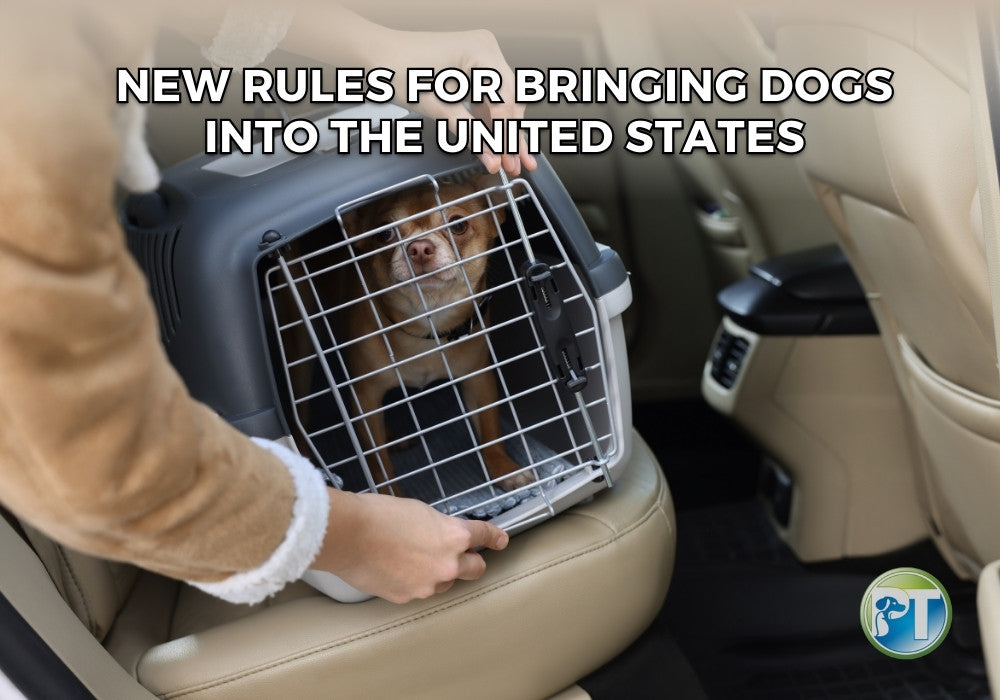New CDC Rules for Bringing Dogs into the United States: What Pet Owners Must Know

Are you planning a trip to the United States with your furry companion? Be aware of the new regulations for bringing dogs into the country.
Recently, the Centers for Disease Control and Prevention (CDC) updated their rules for dogs entering the United States. These changes went into effect on Thursday, August 1, 2024, aiming to prevent the spread of rabies in the US. While these regulations are meant to protect public health, they can be challenging for pet owners to navigate.
Don’t worry, though! We've broken down everything you need to know about these rules to help you and your dog travel without issues.
Why Has the CDC Strengthened Dog Import Regulations?
The United States imports a staggering 700,000 dogs annually. While the US has been rabies-free since 2007, the global threat persists.
To safeguard public health and prevent the reintroduction of rabies, the CDC has implemented stricter regulations. These measures aim to combat the increasing number of falsified rabies vaccination documents and ensure incoming dogs are healthy.

Former Rules for Importing Dogs
Previously, rules for bringing dogs into the United States were less restrictive. Travelers from low-risk countries faced minimal paperwork. However, those returning from high-risk regions faced stricter measures, including vaccinations, serological tests, and potential quarantine.
Now, all travelers bringing dogs into the United States must comply with new guidelines, regardless of their pet's origin. Although the current rules already present additional challenges for pet owners, even stricter regulations could be implemented soon.
Understanding the Updated Rules
Traveling with Your Dog from Low-Risk Countries
If your dog has spent the past 6 months in a low-risk country, the process is much simpler. You'll primarily need to complete a CDC Dog Import Form. To determine your dog's origin country risk status, consult the CDC's official list.

While the updated rules simplify the process from low-risk regions, your dog must still meet these general entry requirements:
- Dog Age Requirement: At least six months old.
- Health: Appear healthy upon arrival, as determined by Customs and Border Protection.
- Microchip: Equipped with an ISO-compatible microchip for easy identification.
Traveling with Your Dog from High-Risk Countries
If your dog has been in a country identified as high-risk for rabies, stricter entry requirements apply. These high-risk destinations include popular travel spots like China, Turkey, the Philippines, Brazil, Peru, and Israel. You can check the CDC's official list for a comprehensive overview of high-risk states.
The specific process for bringing your dog into the US from a high-risk country depends on where they were vaccinated. These requirements are in addition to the general entry rules that apply to all dogs.
1. Dogs Vaccinated in the US
If your dog received its rabies vaccination in the United States, you'll need a Certification of U.S.-Issued Rabies Vaccination from a USDA-accredited veterinarian. Also, you need to ensure the microchip number is included on all necessary paperwork.
For the most accurate and up-to-date information, consult the CDC's guidelines.
2. Dogs Vaccinated Outside the US
For dogs vaccinated outside the US, the process is more complex. You'll have to prepare the following:
- Certification of Foreign Rabies Vaccination and Microchip Form: This document must be completed by your veterinarian and endorsed by a government official.
- Rabies Serology Titer Report: Required if not included in the above certification.
- Reservation at CDC-Registered Animal Care Facility: If your dog lacks a valid rabies serology titer, a 28-day quarantine reservation is mandatory.
CDC-Approved Animal-Care Facilities
The following airports have CDC-approved facilities:
- Hartsfield-Jackson Atlanta International Airport
- Los Angeles International Airport
- Miami International Airport
- John F. Kennedy International Airport (New York)
- Washington Dulles International Airport
- Philadelphia International Airport

For detailed entry requirements on dogs vaccinated in a foreign country, please refer to the CDC’s official website.
What Are the US Entry Rules for Service Dogs?
Service dogs are subject to general health and microchip requirements, similar to other dogs entering the country. However, certain accommodations are in place to facilitate their travel. Airlines and CDC-approved animal care facilities must assist travelers with service dogs, including providing expedited processing. Moreover, service dogs arriving by sea from a high-risk country may be exempt from quarantine if they meet specific requirements.

Impact on Pet Owners and Animals
The new CDC regulations have far-reaching consequences for both pet owners and their furry companions. While designed to protect public health, these rules have introduced significant challenges and potential drawbacks.
- Financial Burden and Emotional Stress
Complying with the new regulations can be financially demanding for pet owners. Additional veterinary care, travel accommodations, and potential quarantine fees can add up quickly. Moreover, the uncertainty surrounding pet travel can create significant stress and anxiety for dog owners.
- Animal Welfare Concerns
Beyond the impact on owners, the new regulations also raise concerns about animal welfare. The stress of travel, potential quarantine, and limited access to familiar environments can negatively affect a pet's well-being. Additionally, the increased workload on veterinarians may indirectly impact the overall care available to pets.

Final Word
Given the complexities of the new regulations, dog owners are advised to plan their travel well in advance. Failure to comply with the new rules could result in significant costs, delays, or even denied entry for your pet.
Additionally, familiarize yourself with airline policies regarding flying with your dog. Consider your dog's comfort and well-being during the journey, especially if traveling for extended periods.
Happy travels!
You might also enjoy...
-
Posted in
Pet News


